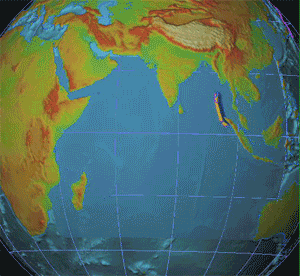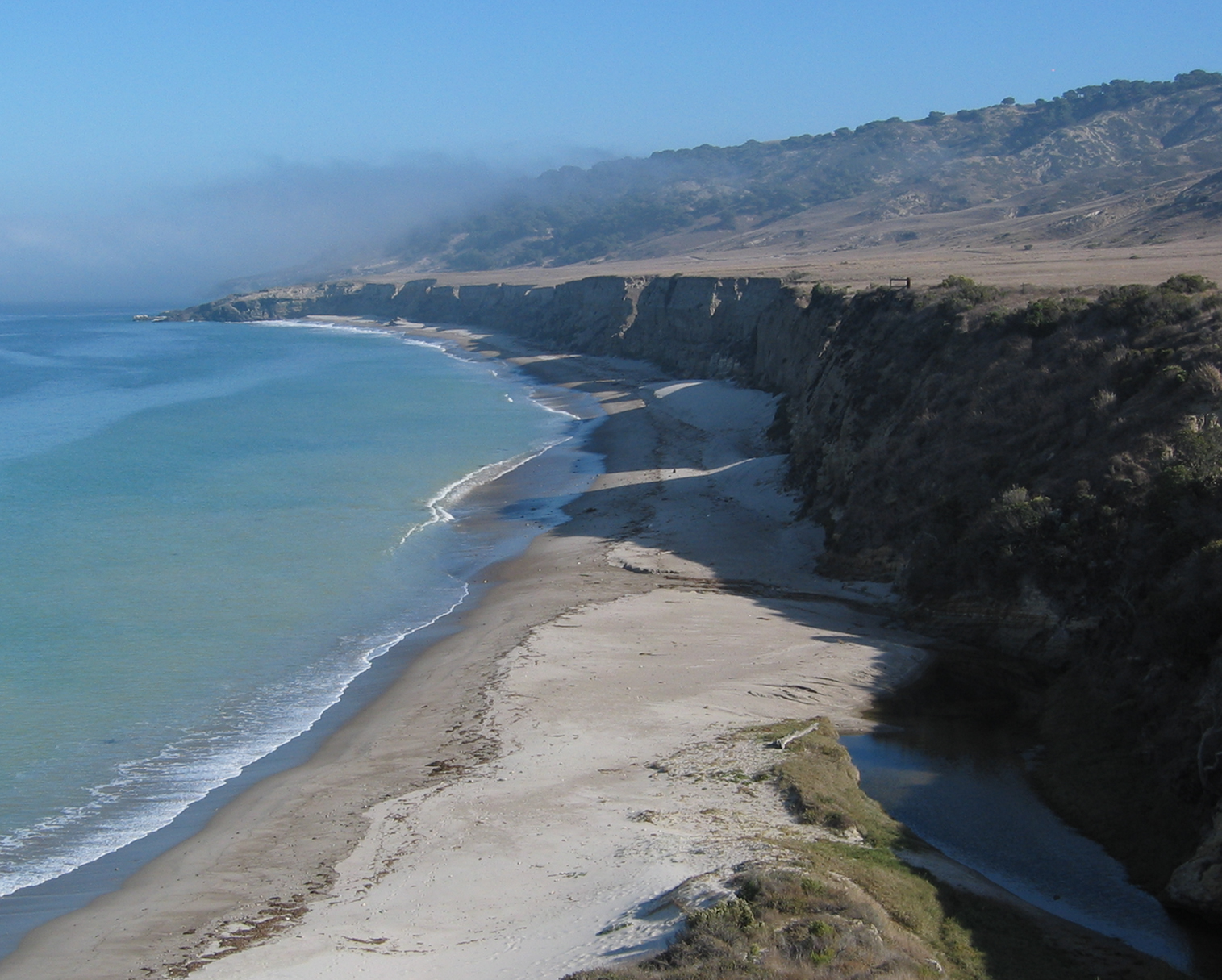|
Seismotectonics
Seismotectonics is the study of the relationship between the earthquakes, active tectonics and individual faults of a region. It seeks to understand which faults are responsible for seismic activity in an area by analysing a combination of regional tectonics, recent instrumentally recorded events, accounts of historical earthquakes and geomorphological evidence. This information can then be used to quantify the seismic hazard of an area. Methodology A seismotectonic analysis of an area often involves the integration of disparate datasets. Regional tectonics An understanding of the regional tectonics of an area is likely to be derived from published geological maps, research publications on the geological structure and seismic reflection profiles, where available, augmented by other geophysical data. In order to understand the seismic hazard of an area it is necessary not only to know where potentially active faults are, but also the orientation of the stress field. This is normal ... [...More Info...] [...Related Items...] OR: [Wikipedia] [Google] [Baidu] |
Tectonics
Tectonics ( via Latin ) are the processes that result in the structure and properties of the Earth's crust and its evolution through time. The field of ''planetary tectonics'' extends the concept to other planets and moons. These processes include those of orogeny, mountain-building, the growth and behavior of the strong, old cores of continents known as cratons, and the ways in which the relatively rigid tectonic plate, plates that constitute the Earth's outer shell interact with each other. Principles of tectonics also provide a framework for understanding the earthquake and volcanic belts that directly affect much of the global population. Tectonic studies are important as guides for economic geology, economic geologists searching for fossil fuels and ore deposits of metallic and nonmetallic resources. An understanding of tectonic principles can help geomorphology, geomorphologists to explain Erosion and tectonics, erosion patterns and other Earth-surface features. Ma ... [...More Info...] [...Related Items...] OR: [Wikipedia] [Google] [Baidu] |
Plate Tectonics
Plate tectonics (, ) is the scientific theory that the Earth's lithosphere comprises a number of large tectonic plates, which have been slowly moving since 3–4 billion years ago. The model builds on the concept of , an idea developed during the first decades of the 20th century. Plate tectonics came to be accepted by Earth science, geoscientists after seafloor spreading was validated in the mid-to-late 1960s. The processes that result in plates and shape Earth's crust are called ''tectonics''. Tectonic plates also occur in other planets and moons. Earth's lithosphere, the rigid outer shell of the planet including the crust (geology), crust and upper mantle, is fractured into seven or eight major plates (depending on how they are defined) and many minor plates or "platelets". Where the plates meet, their relative motion determines the type of plate boundary (or fault (geology), fault): , , or . The relative movement of the plates typically ranges from zero to 10 cm annu ... [...More Info...] [...Related Items...] OR: [Wikipedia] [Google] [Baidu] |
Seismology
Seismology (; from Ancient Greek σεισμός (''seismós'') meaning "earthquake" and -λογία (''-logía'') meaning "study of") is the scientific study of earthquakes (or generally, quakes) and the generation and propagation of elastic waves through planetary bodies. It also includes studies of the environmental effects of earthquakes such as tsunamis; other seismic sources such as volcanoes, plate tectonics, glaciers, rivers, oceanic microseisms, and the atmosphere; and artificial processes such as explosions. Paleoseismology is a related field that uses geology to infer information regarding past earthquakes. A recording of Earth's motion as a function of time, created by a seismograph is called a seismogram. A seismologist is a scientist who works in basic or applied seismology. History Scholarly interest in earthquakes can be traced back to antiquity. Early speculations on the natural causes of earthquakes were included in the writings of Thales of Miletu ... [...More Info...] [...Related Items...] OR: [Wikipedia] [Google] [Baidu] |
New Zealand
New Zealand () is an island country in the southwestern Pacific Ocean. It consists of two main landmasses—the North Island () and the South Island ()—and List of islands of New Zealand, over 600 smaller islands. It is the List of island countries, sixth-largest island country by area and lies east of Australia across the Tasman Sea and south of the islands of New Caledonia, Fiji, and Tonga. The Geography of New Zealand, country's varied topography and sharp mountain peaks, including the Southern Alps (), owe much to tectonic uplift and volcanic eruptions. Capital of New Zealand, New Zealand's capital city is Wellington, and its most populous city is Auckland. The islands of New Zealand were the last large habitable land to be settled by humans. Between about 1280 and 1350, Polynesians began to settle in the islands and subsequently developed a distinctive Māori culture. In 1642, the Dutch explorer Abel Tasman became the first European to sight and record New Zealand. ... [...More Info...] [...Related Items...] OR: [Wikipedia] [Google] [Baidu] |
North Island
The North Island ( , 'the fish of Māui', historically New Ulster) is one of the two main islands of New Zealand, islands of New Zealand, separated from the larger but less populous South Island by Cook Strait. With an area of , it is the List of islands by area, world's 14th-largest island, constituting 43% of New Zealand's land area. It has a population of which is % of New Zealand's residents, making it the most populous island in Polynesia and the List of islands by population, 28th-most-populous island in the world. Twelve main urban areas (half of them officially cities) are in the North Island. From north to south, they are Whangārei, Auckland, Hamilton, New Zealand, Hamilton, Tauranga, Rotorua, Gisborne, New Zealand, Gisborne, New Plymouth, Napier, New Zealand, Napier, Hastings, New Zealand, Hastings, Whanganui, Palmerston North, and New Zealand's capital city Wellington, which is located at the south-west tip of the island. Naming and usage The island has been known ... [...More Info...] [...Related Items...] OR: [Wikipedia] [Google] [Baidu] |
Wairarapa Fault
The Wairarapa Fault is an active seismic fault in the southern part of the North Island of New Zealand. It is a dextral (right lateral) strike-slip fault with a component of uplift to the northwest as expressed by the Rimutaka Range. It forms part of the North Island Fault System, which accommodates the transfer of displacement along the oblique convergent boundary between the Indo-Australian plate and Pacific plate. Geometry The Wairarapa Fault continues south of Lake Wairarapa as the Wharekauhau thrust, which can be traced on the seabed in the Cook Strait for about with a possible further continuation on a fault strand lying to the northwest. These faults segments are considered likely to be the active traces of the southern Wairarapa Fault. At its northeastern end the fault terminates near Mauriceville, with the displacement apparently continued on the Pa Valley and Alfredton Faults. Seismicity Rupture along the Wairarapa Fault and Wharekauhau thrust was responsible f ... [...More Info...] [...Related Items...] OR: [Wikipedia] [Google] [Baidu] |
Rimutaka Range
The Remutaka Range (also spelt Rimutaka Range) is the southernmost range of a mountain chain in the lower North Island of New Zealand. The chain continues north into the Tararua, then Ruahine Ranges, running parallel with the east coast between Wellington and East Cape. The 555-metre summit of the road over the range at its northern saddle is named Remutaka Pass. The pass was formally named on 17 December 2015 when the Minister of Land Information confirmed the decision of the New Zealand Geographic Board. Following the passage of the Rangitāne Tū Mai Rā (Wairarapa Tamaki nui-ā-Rua) Claims Settlement Act 2017, the name of the range officially changed to Remutaka Range. Geography The Remutaka Range runs north-east to south-west for 55 kilometres from the upper reaches of the Hutt Valley (where the range's northern saddle abuts the southern end of the Tararuas) to Turakirae Head at the western end of Palliser Bay. The highest peak is Mount Matthews, at 940 metres, n ... [...More Info...] [...Related Items...] OR: [Wikipedia] [Google] [Baidu] |
Turakirae Head
Turakirae Head is a promontory and scientific reserve on the southern coast of New Zealand's North Island. It is located at the western end of Palliser Bay, 20 kilometres southeast of Wellington, at the southern end of the Remutaka Range. The headland is notable for a series of marine terraces and beach ridges that record uplift from past earthquakes. Turakirae Head is also home to a seal colony and southern bull kelp. Turakirae also marks the southernmost coastal boundary point for the Ngāti Kahungunu tribe which extends as far north as Paritu which is just south of Gisborne. Geology Four Holocene marine terraces are visible at Turakirae Head, providing a record of earthquake-caused uplifting of the land over the last 7000 years. The lowest ridge was raised by the 1855 Wairarapa earthquake, which caused a maximum uplift of 6.4 m. The next ridge, with a maximum uplift of 9.1 m, was previously thought to have formed as a result of the Haowhenua earthquake around 1460 AD, b ... [...More Info...] [...Related Items...] OR: [Wikipedia] [Google] [Baidu] |
Raised Beach
A raised beach, coastal terrace,Pinter, N (2010): 'Coastal Terraces, Sealevel, and Active Tectonics' (educational exercise), from 2/04/2011/ref> or perched coastline is a relatively flat, horizontal or gently inclined surface of marine origin,Pirazzoli, PA (2005a): 'Marine Terraces', in Schwartz, ML (ed) ''Encyclopedia of Coastal Science.'' Springer, Dordrecht, pp. 632–633 mostly an old abrasion platform which has been lifted out of the sphere of wave activity (sometimes called "tread"). Thus, it lies above or under the current sea level, depending on the time of its formation.Strahler AH; Strahler AN (2005): ''Physische Geographie.'' Ulmer, Stuttgart, 686 p.Leser, H (ed)(2005): ‚''Wörterbuch Allgemeine Geographie.'' Westermann&Deutscher Taschenbuch Verlag, Braunschweig, 1119 p. It is bounded by a steeper ascending slope on the landward side and a steeper descending slope on the seaward side (sometimes called "riser"). Due to its generally flat shape, it is often used for ... [...More Info...] [...Related Items...] OR: [Wikipedia] [Google] [Baidu] |
Fold (geology)
In structural geology, a fold is a stack of originally planar surfaces, such as sedimentary rock, sedimentary stratum, strata, that are bent or curved (''"folded"'') during permanent deformation (engineering), deformation. Folds in rocks vary in size from microscopic crinkles to mountain-sized folds. They occur as single isolated folds or in periodic sets (known as ''fold trains''). wikt:synsedimentary, Synsedimentary folds are those formed during sedimentary deposition. Folds form under varied conditions of stress (physics), stress, pore pressure, and temperature gradient, as evidenced by their presence in soft sedimentary rock, sediments, the full spectrum of metamorphic rocks, and even as primary flow structures in some igneous rocks. A set of folds distributed on a regional scale constitutes a fold belt, a common feature of orogeny, orogenic zones. Folds are commonly formed by shortening of existing layers, but may also be formed as a result of displacement on a non-planar f ... [...More Info...] [...Related Items...] OR: [Wikipedia] [Google] [Baidu] |
Active Fault
An active fault is a fault that is likely to become the source of another earthquake sometime in the future. Geologists commonly consider faults to be active if there has been movement observed or evidence of seismic activity during the last 10,000 years. * Active faulting is considered to be a geologic hazard – one related to earthquakes as a cause. Effects of movement on an active fault include strong ground motion, surface faulting, tectonic deformation, landslides and rockfalls, liquefaction, tsunamis, and seiches. Quaternary faults are those active faults that have been recognized at the surface and which have evidence of movement during the Quaternary Period. Related geological disciplines for ''active-fault'' studies include geomorphology, seismology, reflection seismology, plate tectonics, geodetics and remote sensing, risk analysis, and others. Location Active faults tend to occur in the vicinity of tectonic plate boundaries, and active fault research h ... [...More Info...] [...Related Items...] OR: [Wikipedia] [Google] [Baidu] |






